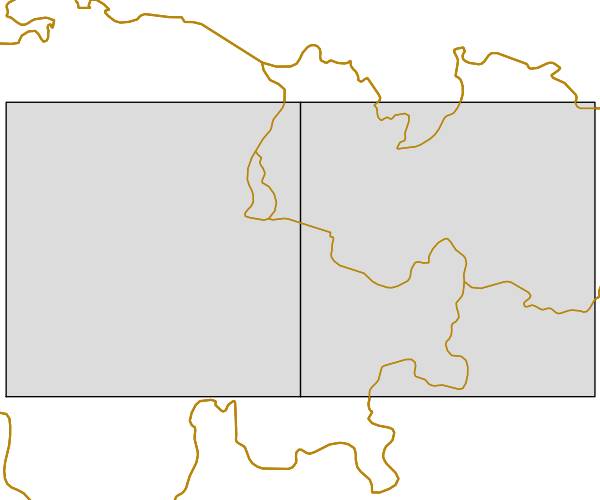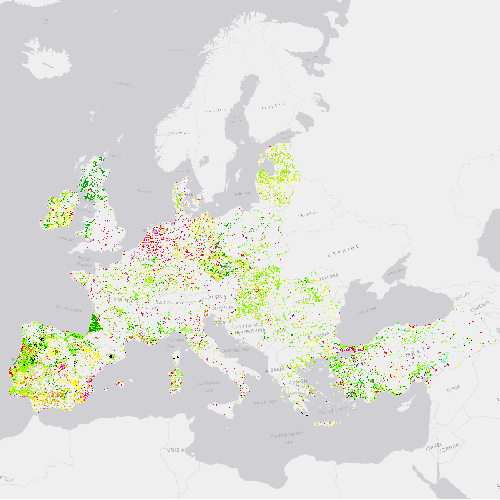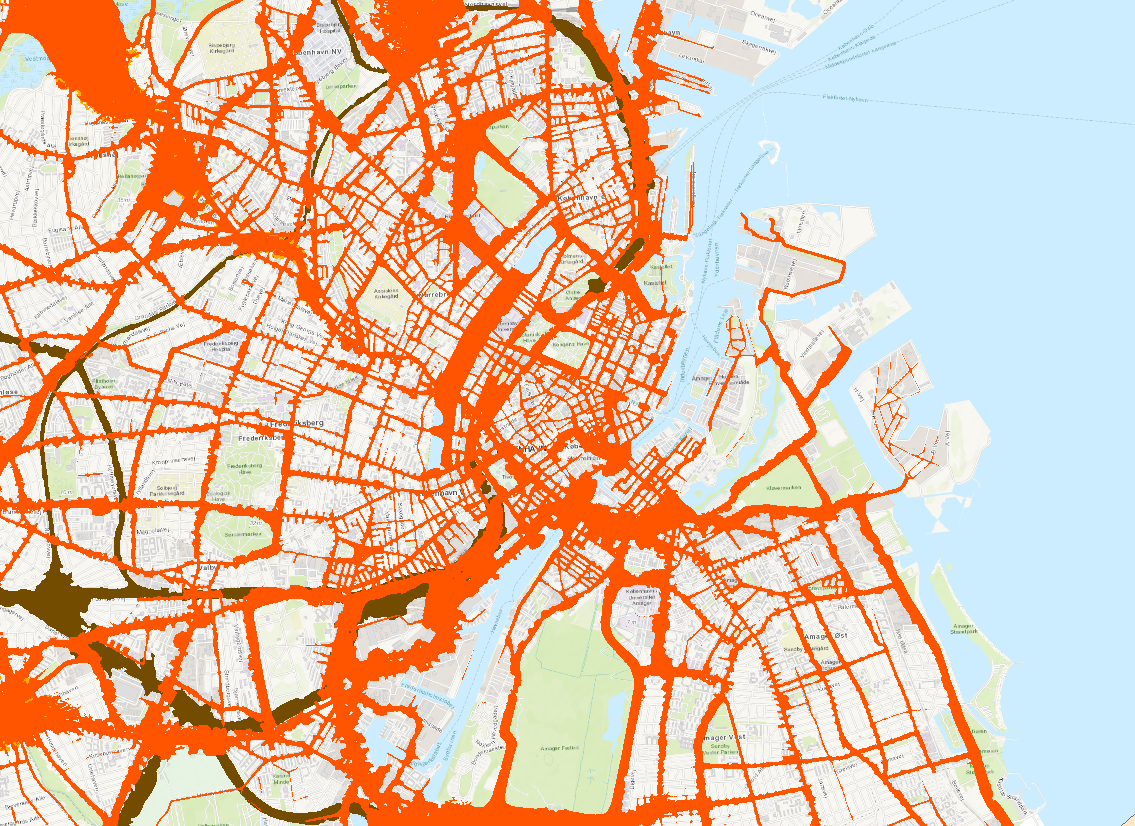Liechtenstein
Type of resources
Available actions
Topics
INSPIRE themes
Keywords
Contact for the resource
Provided by
Years
Formats
Representation types
Update frequencies
status
Scale
Resolution
-

The grid is based on proposal at the 1st European Workshop on Reference Grids in 2003 and later INSPIRE geographical grid systems. The sample grid available here is part of a set of three polygon grids in 1, 10 and 100 kilometres. The grids cover at least country borders and, where applicable, marine Exclusive Economic Zones v7.0, http://www.marineregions.org. Note that the extent of the grid into the marine area does not reflect the extent of the territorial waters.
-

The grid is based on proposal at the 1st European Workshop on Reference Grids in 2003 and later INSPIRE geographical grid systems. The sample grid available here is part of a set of three polygon grids in 1, 10 and 100 kilometres. The grids cover at least country borders and, where applicable, marine Exclusive Economic Zones v7.0, http://www.marineregions.org. Note that the extent of the grid into the marine area does not reflect the extent of the territorial waters.
-

The Common Database on Designated Areas (CDDA) is more commonly known as Nationally designated areas. It is the official source of protected area information from European countries to the World Database of Protected Areas (WDPA). The inventory began in 1995 under the CORINE programme of the European Commission. It is now one of the agreed Eionet priority data flows maintained by EEA with support from the European Topic Centre on Biological Diversity. The CDDA data can be queried online in the European Nature Information System (EUNIS). Geographical coverage of GIS vector boundary data: Albania, Austria, Belgium, Bosnia and Herzegovina, Bulgaria, Croatia, Cyprus, Czech Republic, Denmark, Estonia, Finland, France, Germany, Greece, Hungary, Iceland, Ireland, Italy, Kosovo under UNSC Resolution 1244/99, Latvia, Liechtenstein, Lithuania, Luxembourg, the North Macedonia, Malta, Montenegro, the Netherlands, Norway, Poland, Portugal, Romania, Serbia, Slovakia, Slovenia, Spain, Sweden, Switzerland and United Kingdom. EEA does not have permission to distribute some or all sites reported by Austria, Estonia, Hungary, Ireland, Romania and Turkey. When re-using the data, copyright is to be mentioned specifically for Estonia and for Finland: "Estonian Environmental Register 01.01.2016; "©Finnish Environment Institute, 2016".
-

The natural assemblage species indicator dataset is a forest dataset that measures the congruency between the potential and current tree species distribution. The natural assemblage indicator is considered one of the key indicator for the identification of High Nature Value forest area in Europe. The reference year for this data set is 2006 and the spatial coverage is including the 28 EU Member States, Liechtenstein, Norway, Switzerland, and Turkey. The methodological approach is based on two data sources: (1) EUNIS woodland, forest and other wooded land habitats, predicted potential distribution of habitat suitability –EEA- as potential distribution; (2) Relative probability of presence of forest tree species (RPP) of European Atlas of Forest Tree Species –JRC- as current distribution The dataset values express, in the fuzzy values between 0 and 1, the percentage of tree species vegetation agreed with potentially dominant tree species by pixels. This measure is independent of the current forest coverage. The values close to 1 mean high percentage of native tree species (natural) whereas values close to 0 are an approximation of a low level of naturalness, being a high percentage of non-native species.
-

The EEA Water Accounts Spatial Units is an extraction of the European catchments and Rivers network system (ECRINS), aggregation catchments and reference layers - version 1, Jun. 2012. It contains 117 river basins extracted from the ECRINS functional river basin districts (EcrAgg). The Ecrins river basin districts are delineated according to the hydrological thresholds and do not necessarily follow administrative boundaries. The main purpose of the data set is to display the EEA water accounts outputs at the river basin level.
-

Corine Land Cover Change 1990-2000 (CHA9000) is one of the Corine Land Cover (CLC) datasets produced within the frame the Copernicus Land Monitoring Service referring to changes in land cover / land use status between the years 1990 and 2000. CHA is derived from satellite imagery by direct mapping of changes taken place between two consecutive inventories, based on image-to-image comparison. CLC service has a long-time heritage (formerly known as "CORINE Land Cover Programme"), coordinated by the European Environment Agency (EEA). It provides consistent and thematically detailed information on land cover and land cover changes across Europe. CLC datasets are based on the classification of satellite images produced by the national teams of the participating countries - the EEA members and cooperating countries (EEA39). National CLC inventories are then further integrated into a seamless land cover map of Europe. The resulting European database relies on standard methodology and nomenclature with following base parameters: 44 classes in the hierarchical 3-level CLC nomenclature; minimum mapping unit (MMU) for status layers is 25 hectares; minimum width of linear elements is 100 metres. Change layers have higher resolution, i.e. minimum mapping unit (MMU) is 5 hectares for Land Cover Changes (CHA), and the minimum width of linear elements is 100 metres. The CLC service delivers important data sets supporting the implementation of key priority areas of the Environment Action Programmes of the European Union as e.g. protecting ecosystems, halting the loss of biological diversity, tracking the impacts of climate change, monitoring urban land take, assessing developments in agriculture or dealing with water resources directives. CLC belongs to the Pan-European component of the Copernicus Land Monitoring Service (https://land.copernicus.eu/), part of the European Copernicus Programme coordinated by the European Environment Agency, providing environmental information from a combination of air- and space-based observation systems and in-situ monitoring. Additional information about CLC product description including mapping guides can be found at https://land.copernicus.eu/user-corner/technical-library/. CLC class descriptions can be found at https://land.copernicus.eu/user-corner/technical-library/corine-land-cover-nomenclature-guidelines/html/.
-

CORINE Land Cover (CLC) was specified to standardize data collection on land in Europe to support environmental policy development. The reference year of first CLC inventory was 1990 (CLC1990), and the first update created in 2000. Later the update cycle has become 6 years. The number of participating countries has increased over time − currently includes 33 European Environment Agency (EEA) member countries and six cooperating countries (EEA39) with a total area of over 5.8 Mkm2. Ortho-corrected high spatial resolution satellite images provide the geometrical and thematic basis for mapping. In-situ data (topographic maps, ortho-photos and ground survey data) are essential ancillary information. The project is coordinated by the EEA in the frame of the EU Copernicus programme and implemented by national teams under the management and quality control (QC) of the EEA. The basic technical parameters of CLC (i.e. 44 classes in nomenclature, 25 hectares minimum mapping unit (MMU) and 100 meters minimum mapping width) have not changed since the beginning, therefore the results of the different inventories are comparable. The layer of CORINE Land Cover Changes (CLCC) is produced since the second CLC inventory (CLC2000). CLCC is derived from satellite imagery by direct mapping of changes taken place between two consecutive inventories, based on image-to-image comparison. Change mapping applies a 5 ha MMU to pick up more details in CLCC layer than in CLC status layer. Integration of national CLC and CLCC data includes some harmonization along national borders. Two European validation studies have shown that the achieved thematic accuracy is above the specified minimum (85 %). Primary CLC and CLCC data are in vector format with polygon topology. Derived products in raster format are also available. The seamless European CLC and CLCC time series data (CLC1990, CLC2000, CLC2006, CLC2012 and related CLCC data) are distributed in the standard European Coordinate Reference System defined by the European Terrestrial Reference System 1989 (ETRS89) datum and Lambert Azimuthal Equal Area (LAEA) projection (EPSG: 3035). Results of the CLC inventories can be downloaded from Copernicus Land site free of charge for all users. CLC data can contribute to a wide range of studies with European coverage, e.g.: ecosystem mapping, modelling the impacts of climate change, landscape fragmentation by roads, abandonment of farm land and major structural changes in agriculture, urban sprawl, water management.
-

The data set includes the noise contours which have been reported by countries under the terms of the Environmental Noise Directive (END) by the 33 EEA member countries (EEA-33) excluding Turkey for the third round of noise mapping in 2017. The data set includes submissions from the countries until 01/01/2019. According to the END, for major sources of noise (i.e. major roads with more than 3 000 000 vehicle passages a year, major railways with more than 30 000 train passages per year and airports with more than 50 000 movements per year), countries have to submit noise contour maps for at least the >55 dB, >65 dB bands. Noise contour maps for roads, railways, airports and industries in urban agglomerations of more than 100 000 inhabitants need to be represented for at least 60, 65, 70 and 75 dB bands for the day-evening-night period. The data set is provided in GDB and GPKG files, with all the reported noise contours in vector format by country or region/state (in the case of BE and DE), for major sources at agglomeration level and national level and for both indicators Lden (day-evening-night noise level: the long-term average indicator designed to assess annoyance defined by the END; it refers to an A-weighted average sound pressure level over all days, evenings and nights in a year, with an evening weighting of 5 dB and a night weighting of 10 dB) and Lnight (night noise level: the long-term average indicator defined by the END and designed to assess sleep disturbance; it refers to an A-weighted annual average night period of exposure).
-

CORINE Land Cover (CLC) was specified to standardize data collection on land in Europe to support environmental policy development. The reference year of first CLC inventory was 1990 (CLC1990), and the first update created in 2000. Later the update cycle has become 6 years. The number of participating countries has increased over time − currently includes 33 European Environment Agency (EEA) member countries and six cooperating countries (EEA39) with a total area of over 5.8 Mkm2. Ortho-corrected high spatial resolution satellite images provide the geometrical and thematic basis for mapping. In-situ data (topographic maps, ortho-photos and ground survey data) are essential ancillary information. The project is coordinated by the EEA in the frame of the EU Copernicus programme and implemented by national teams under the management and quality control (QC) of the EEA. The basic technical parameters of CLC (i.e. 44 classes in nomenclature, 25 hectares minimum mapping unit (MMU) and 100 meters minimum mapping width) have not changed since the beginning, therefore the results of the different inventories are comparable. The layer of CORINE Land Cover Changes (CLCC) is produced since the second CLC inventory (CLC2000). CLCC is derived from satellite imagery by direct mapping of changes taken place between two consecutive inventories, based on image-to-image comparison. Change mapping applies a 5 ha MMU to pick up more details in CLCC layer than in CLC status layer. Integration of national CLC and CLCC data includes some harmonization along national borders. Two European validation studies have shown that the achieved thematic accuracy is above the specified minimum (85 %). Primary CLC and CLCC data are in vector format with polygon topology. Derived products in raster format are also available. The seamless European CLC and CLCC time series data (CLC1990, CLC2000, CLC2006, CLC2012 and related CLCC data) are distributed in the standard European Coordinate Reference System defined by the European Terrestrial Reference System 1989 (ETRS89) datum and Lambert Azimuthal Equal Area (LAEA) projection (EPSG: 3035). Results of the CLC inventories can be downloaded from Copernicus Land site free of charge for all users. CLC data can contribute to a wide range of studies with European coverage, e.g.: ecosystem mapping, modelling the impacts of climate change, landscape fragmentation by roads, abandonment of farm land and major structural changes in agriculture, urban sprawl, water management.
-

CORINE Land Cover (CLC) data are produced from 1986 for European countries. Altogether four mapping inventories were implemented in this period, producing four status layers (CLC1990, CLC2000, CLC2006, CLC2012) and three CLC-change (CLCC) layers for three periods (1990-2000, 2000-2006, 2006-2012). To eliminate several inconsistencies from the usage of 100m raster version of original CLC data in the accounting systems at EEA, like Land and Ecosystem Accounting (LEAC), which uses a 1km grid (CUBE) base for calculation, a harmonization method were elaborated for the CLC and CLCC data. The applied solution for the harmonization combines CLC status and change layers in the 100m raster form in order to create homogeneous quality time series of CLC / CLC-change layers for accounting purposes. The so called "CLC accounting layers" fulfilling the relation: CLC-change = Harmonized CLC_ new status – Harmonized CLC old status. The modification method maximizes compatibility of “backdated” CLC status layers with CLC2012 and each other. However this simple solution causes several issues to be solved: (1) Harmonized CLC layers loose statistical comparability with original CLC layers, because of increased geometry; smaller than 25ha MMU features will appear locally where changes appear. In case of some CLC classes this causes significant differences. (2) “Fake features” are appearing in the backdated CLC status layers due to inconsistencies between CLC-change datasets. CLC1990 was the first CORINE Land Cover inventory and lasted for 10 years. Photo-Interpretation mostly done on plastic overlay. Field checking was an integral part of the work. The basic parameters of the project (25 ha minimum mapping unit, 100 m minimum mapping width and the European level-3 nomenclature) tested. These are used consistently in all subsequent inventories.
 RUC Geo-Data catalogue
RUC Geo-Data catalogue